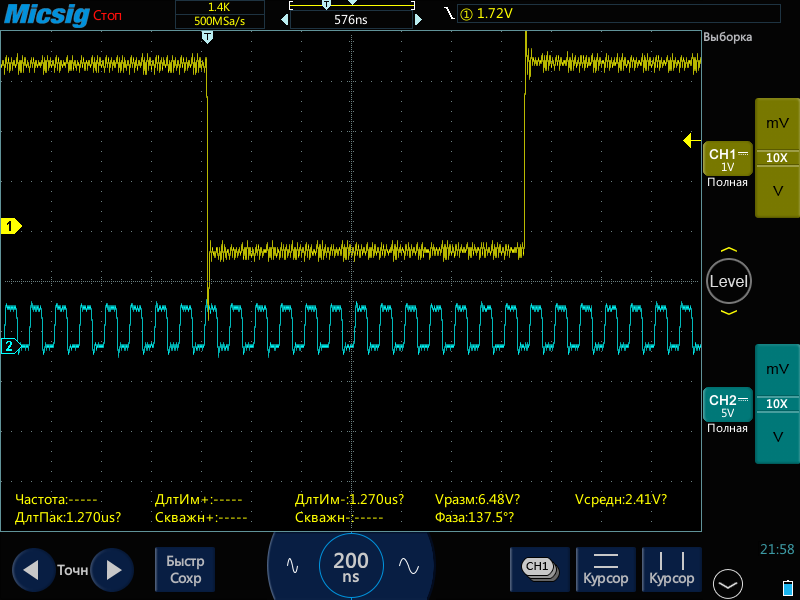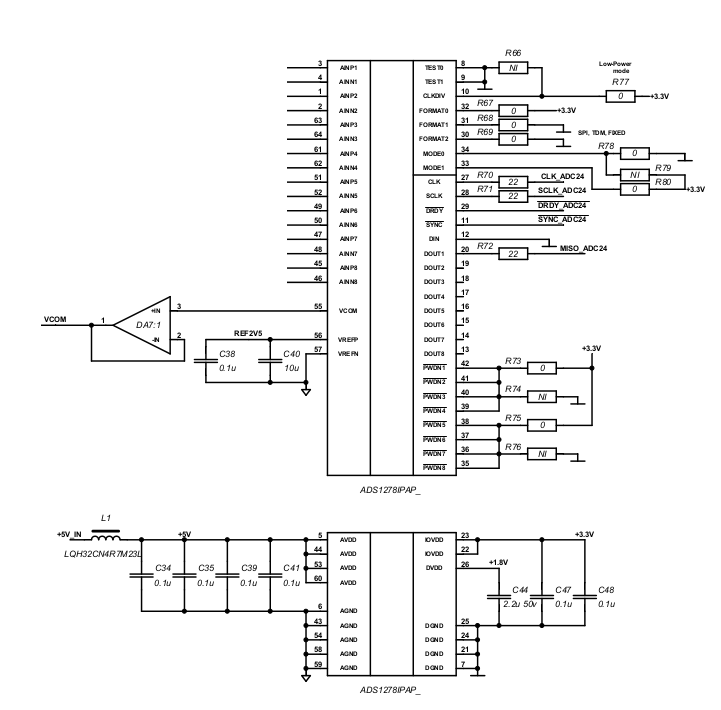Hi,
I am working with ADS1278.
Configuration is
Low power mode, SPI, TDM, FIXED
CLK = 25 MHz
SCLK = 25 MHz
DRDY = 48 kHz
The problem is in random offset (+-100 lsb) at power on and / or CLK restart.
After some experiment I've found that
1. Offset appears after stop / start timer in microcontroller which used to generate CLK
2. Offset doesn't apper after enable / disable gpio on CLK pin while timer running
Is it normal behavior?





